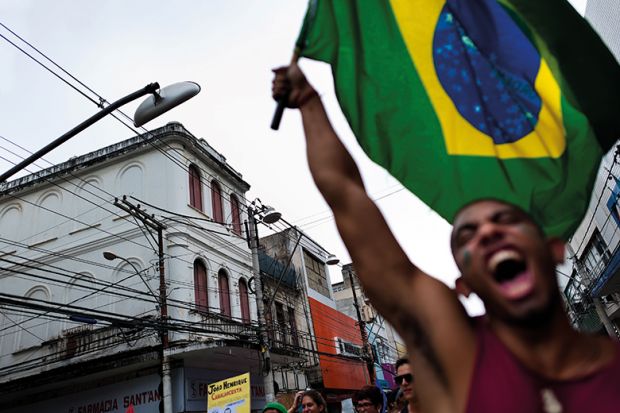Even 130 years after the abolition of slavery, Brazilian society is still well known for its racial inequality and lack of social justice. In an attempt to reduce racial disadvantage and discrimination, the country’s Supreme Court unanimously voted for the implementation of race quotas in public universities in 2012.
In The Prism of Race, David Lehmann gives a detailed explanation of the process by which affirmative action was adopted in Brazil and goes on to explore the quota law for black students. In a fluid narrative that thoroughly investigates the arguments for and against race-based quotas, he guides the reader through the paths of Brazilian society and political culture.
The main questions the book attempts to answer are: why were race quotas approved when other actions to reduce racial inequalities had no support, and why did the campaign focus mainly on elite universities? The answers emerge in the course of a text that supplies a general overview of the country’s political and institutional structures.
The most controversial subjects, such as the self-assignment of racial classifications, are discussed from different points of view, leaving readers to reach their own conclusions. While most of the book’s arguments are based on surveys and sociological analysis, the discussion also includes evidence from empirical studies on the adoption of race quotas in Brazilian universities.
As well as considering the role of a few political figures, Lehmann offers a theory of social movements to enable readers to see how the “prism of race” sheds light on some deeply rooted features of Brazilian culture. He also argues that such social mobilisation must be interpreted within a global context because it is permeated by the involvement and financial support of international foundations and non-governmental organisations.
Important comparisons are made between the forms of affirmative action adopted in Brazil and in other countries such as the US, India, Malaysia and South Africa. The conceptions of quotas in those countries are also distinguished, since, for example, they are known as “reserved seats” in India and “positive discrimination” in the US.
What emerges from Lehmann’s book is the volatility of social and political decisions in Brazil. Despite being a legitimate effort by the state to legislate against racial discrimination, the quotas focused only on public universities, which, the author believes, further strengthens his claim that “the driving force behind the quotas campaign is access to the elite rather than reduced social inequality”. That is a strong statement, but it does not mean that he has taken a position opposing the quotas.
The debate on race quotas in Brazil is still open, and some of Lehmann’s hypotheses require further investigation, although he himself suggests that this could become challenging for him because it would require more interviews and people might resist his interpretations. From his point of view, however, in a country already suffering “accumulated and intractable problems of inequality and a distorted political economy”, the adoption of race quotas should not be seen as a luxury.
Claudia Bueno Rocha Vidigal has a PhD in applied economics from the University of Minnesota and is currently a postdoctoral fellow at the State University of Maringá in Brazil.
The Prism of Race: The Politics and Ideology of Affirmative Action in Brazil
By David Lehmann
University of Michigan Press
272pp, £61.95
ISBN 9780472130849
Published 30 July 2018
Register to continue
Why register?
- Registration is free and only takes a moment
- Once registered, you can read 3 articles a month
- Sign up for our newsletter
Subscribe
Or subscribe for unlimited access to:
- Unlimited access to news, views, insights & reviews
- Digital editions
- Digital access to THE’s university and college rankings analysis
Already registered or a current subscriber?







